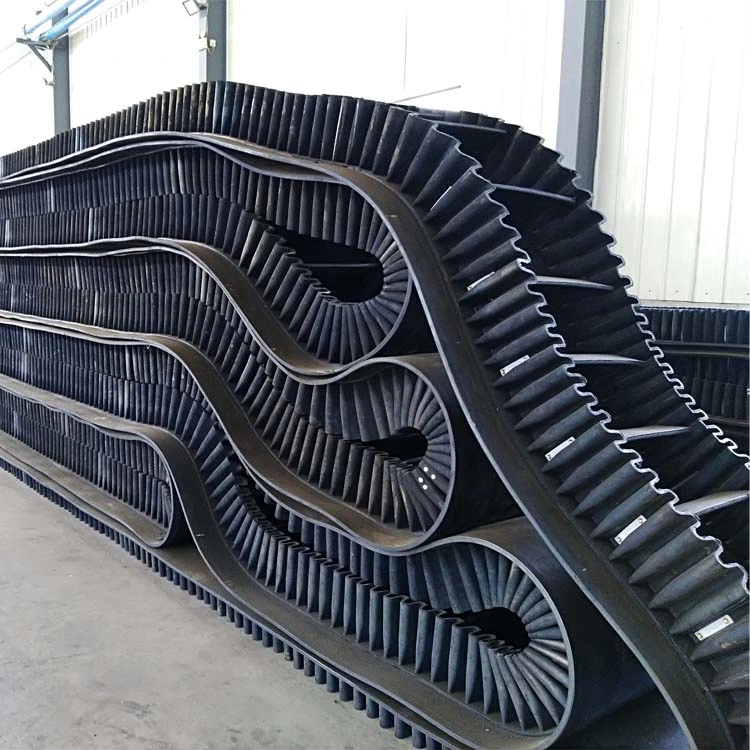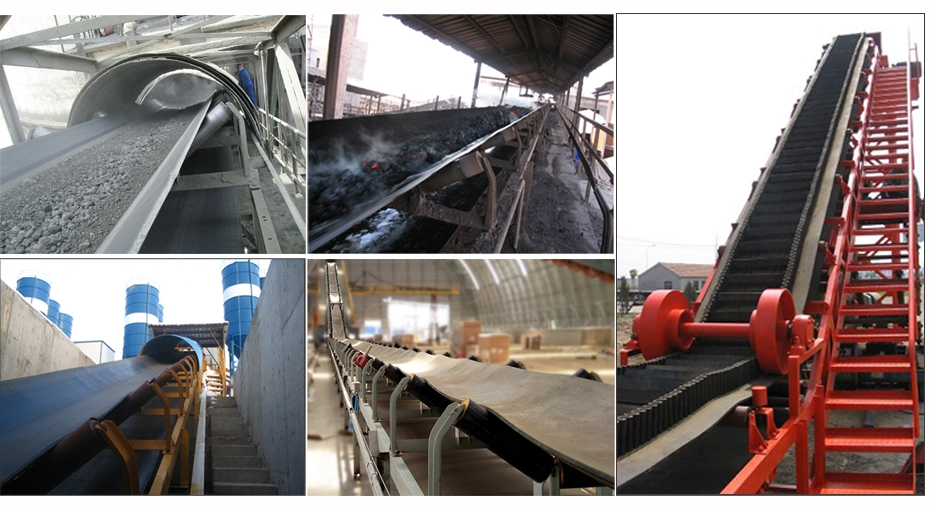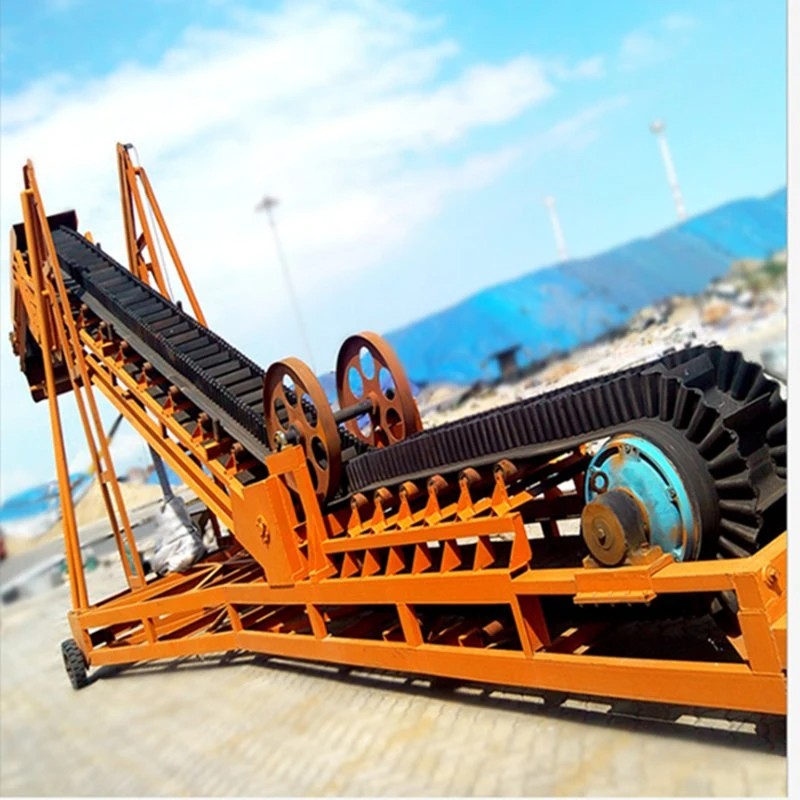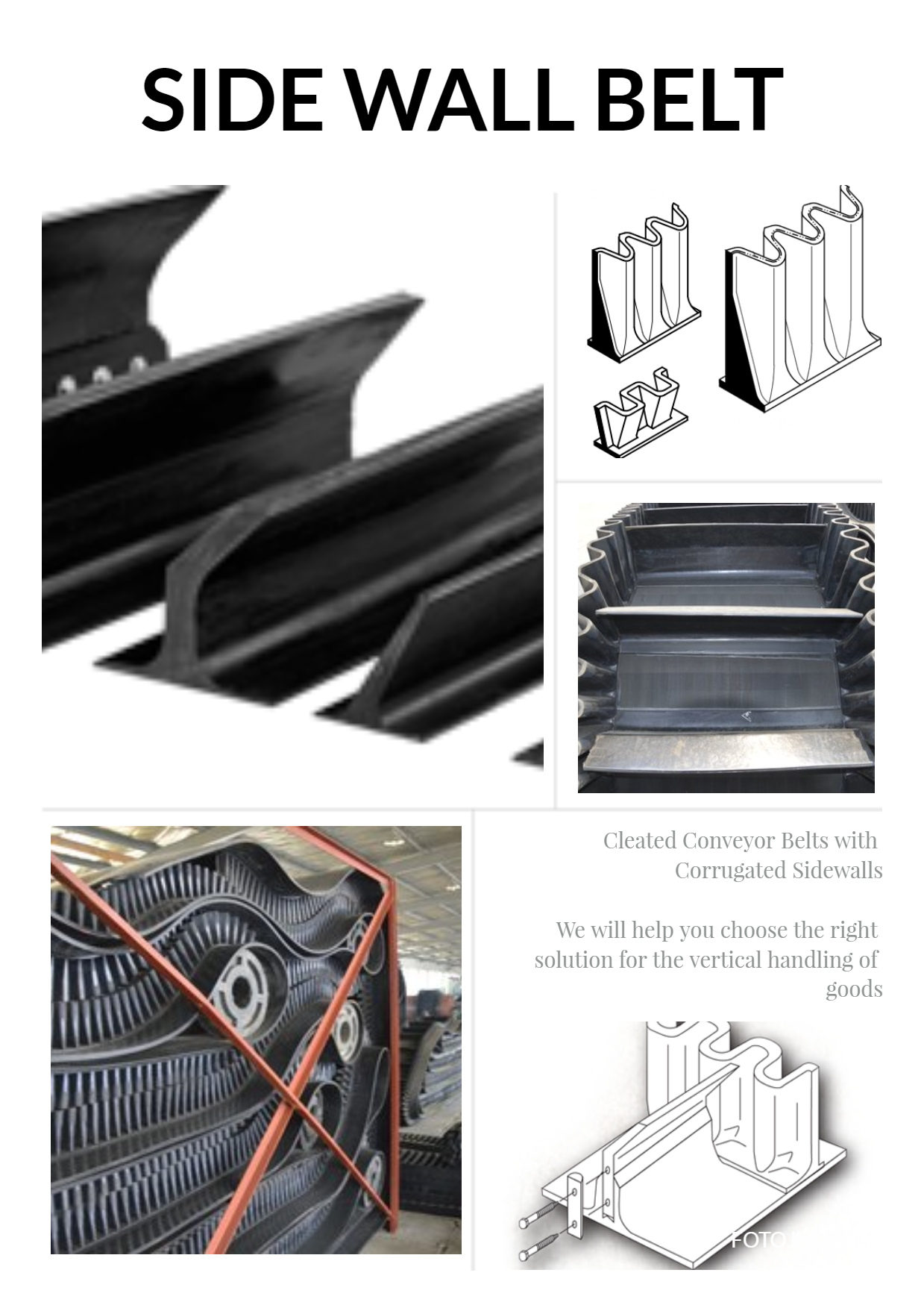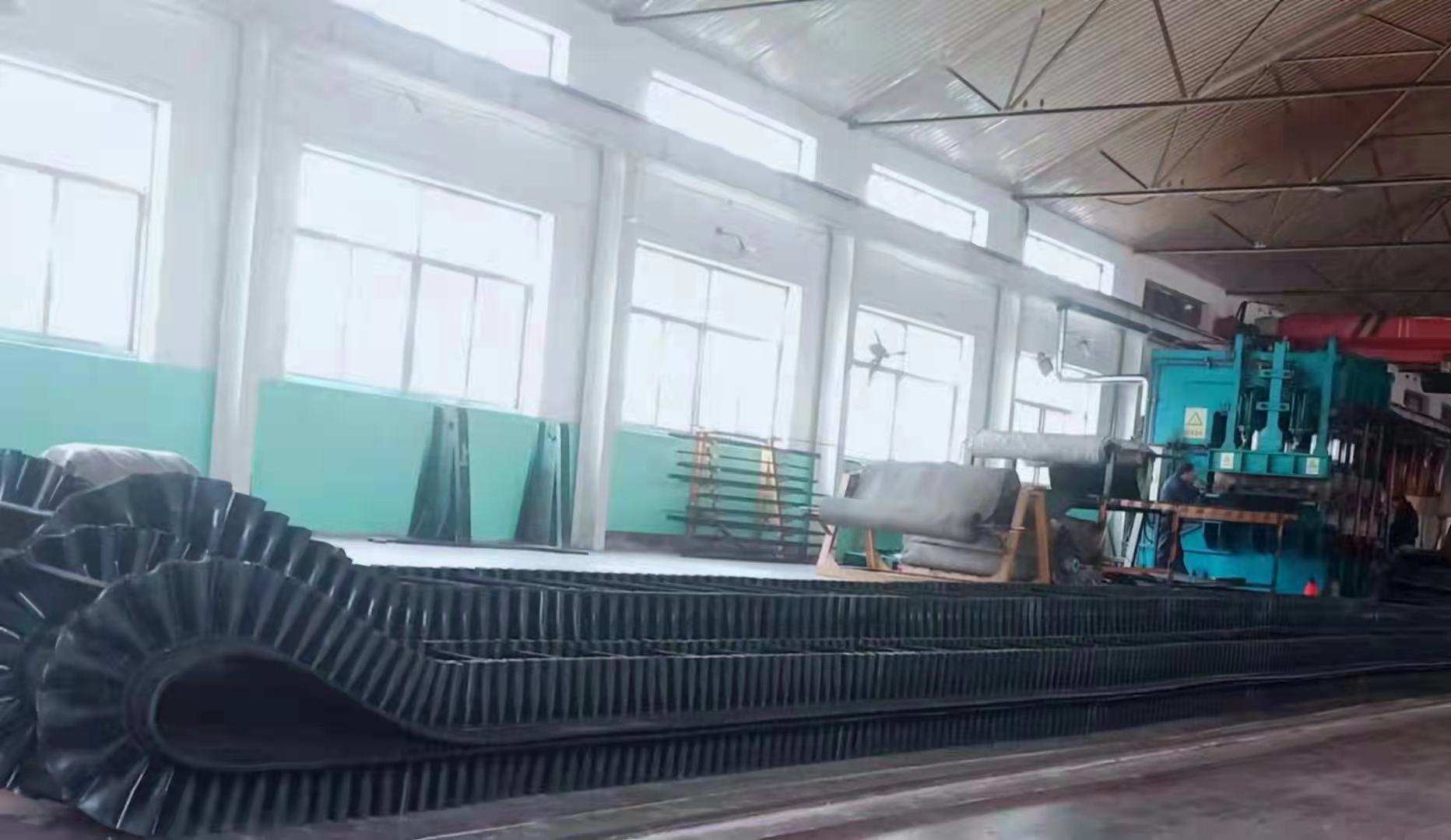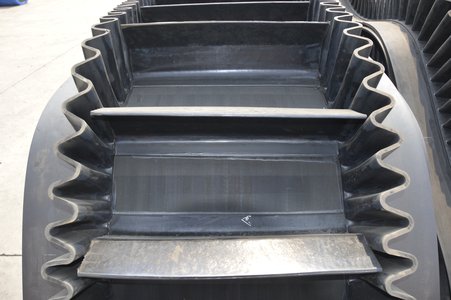Choosing the Right Conveyor Belt: A Comprehensive Guide for Industries
In the intricate web of industrial operations, the choice of a LOOP TYPE BELT WITH SKIRT is a decision of paramount significance. Conveyor belts are the unsung heroes, silently facilitating the movement of materials and goods across industries. The evolution of these belts has introduced a variety of options, each tailored to specific applications and industries. In this comprehensive guide, we delve into the intricacies of selecting the right conveyor belt, focusing particularly on the versatile category of sidewall conveyor belts and their corrugated counterparts.
Understanding Sidewall Conveyor Belts
Introduction to Sidewall Conveyor Belts:
Sidewall conveyor belts are a specialized category designed for vertical conveying applications where standard belts may fall short. They feature vertical corrugated sidewalls that effectively contain materials, preventing spillage and allowing steep incline conveying.
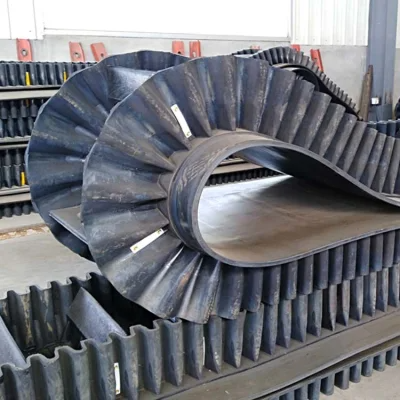
Benefits of LOOP TYPE BELT WITH SKIRT:
- High Incline Capability: Sidewall belts excel in applications requiring steep incline conveying, where traditional belts may struggle.
- Material Containment: The corrugated sidewalls act as barriers, containing materials and preventing spillage during vertical transport.
- Space Efficiency: Sidewall belts often eliminate the need for additional transfer points, optimizing space in confined environments.
Types of Sidewall Conveyor Belts
Corrugated Sidewall Conveyor Belt:
The corrugated sidewall variant enhances the versatility of sidewall belts, featuring deep, robust corrugations. This design provides added rigidity and durability, making it suitable for demanding applications.
Sidewall Rubber Conveyor Belt:
The rubber composition in sidewall conveyor belts contributes to their durability and flexibility. These belts are adept at handling a variety of materials while providing reliable performance in challenging environments.
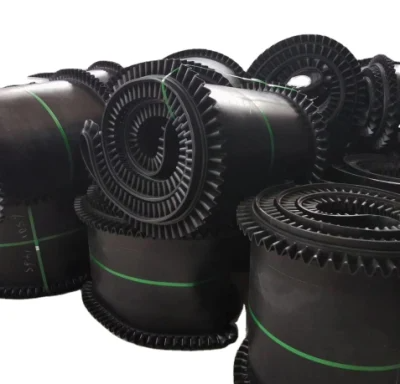
Factors Influencing LOOP TYPE BELT WITH SKIRT Selection
1. Application Requirements:
Consider the specific needs of your application. If steep inclines or material containment are critical, sidewall conveyor belts, especially the corrugated variety, are likely the optimal choice.
2. Material Characteristics:
Different materials have varying abrasiveness, impact resistance, and flow properties. Ensure the selected belt can withstand the characteristics of the conveyed material without compromising performance.
3. Environmental Factors:
Factors such as temperature, humidity, and exposure to chemicals can impact the longevity and performance of conveyor belts. Choose a belt that aligns with the environmental conditions of your operation.
 Sidewall Conveyor Belt Manufacturers: Assessing Reputation
Sidewall Conveyor Belt Manufacturers: Assessing Reputation
1. Industry Experience:
Evaluate the manufacturer’s industry experience. Established manufacturers with a track record of producing quality belts are more likely to provide reliable products.
2. Customization Capabilities:
Look for manufacturers who offer customization options. The ability to tailor sidewall belts to specific industry needs ensures optimal performance in diverse applications.
3. Certification and Compliance:
Ensure that the manufacturer adheres to industry standards and certifications. Compliance with regulations ensures the production of belts that meet safety and quality benchmarks.
Sidewall Belt Conveyor Design: Key Considerations
1. Belt Width and Speed:
Determine the optimal belt width and speed for your application. The design should facilitate efficient material handling without compromising safety.
2. Troughing Angle:
The troughing angle of the conveyor belt influences its ability to handle different materials. Consider the material characteristics and flow requirements when determining the troughing angle.
3. Pulley Diameter and Transition Distance:
Properly sized pulleys and transition distances are critical for the longevity of the conveyor belt. Consult with the manufacturer to ensure these components align with the belt design.
Implementing Sidewall Belts: Practical Tips
1. Regular Maintenance:
Establish a routine maintenance schedule to inspect and address any wear or damage promptly. Regular maintenance enhances the lifespan and performance of sidewall conveyor belts.
2. Training and Education:
Ensure that personnel involved in conveyor belt operation are adequately trained. Understanding proper usage and maintenance procedures is essential for preventing premature wear and tear.
3. Monitoring and Automation:
Implement monitoring systems and automation where applicable. Advanced technologies can provide real-time data on the condition of the conveyor belt, allowing for proactive maintenance and minimizing downtime.
The Future of Sidewall Conveyor Belts
1. Technological Advancements:
The conveyor belt industry continues to witness technological advancements. Keep abreast of innovations such as smart monitoring systems and material enhancements that can contribute to improved performance and efficiency.
2. Sustainable Practices:
As sustainability becomes a focal point in various industries, conveyor belt manufacturers are exploring eco-friendly materials and production processes. Consider belts produced with a commitment to environmental responsibility.
 Case Studies: Real-world Applications
Case Studies: Real-world Applications
1. Mining Industry:
Explore how sidewall conveyor belts have revolutionized material transport in the mining sector, especially in challenging terrains where traditional belts may be impractical.
2. Agricultural Sector:
Understand how sidewall belts play a crucial role in the agricultural sector, facilitating the efficient movement of bulk materials with minimal spillage.
Conclusion: Elevating Material Handling with Sidewall Conveyor Belts
In the intricate dance of industry, the conveyor belt emerges as a choreographer, orchestrating the movement of materials with precision. Sidewall conveyor belts, particularly the robust and versatile corrugated variants, stand as testament to the industry’s commitment to efficiency and innovation.
Choosing the right conveyor belt is not merely a procurement decision; it’s a strategic investment in the seamless flow of operations. With the comprehensive guide provided, industries can navigate the intricacies of sidewall conveyor belts, leveraging their benefits and ensuring a reliable, efficient, and durable material handling solution for years to come. As industries evolve, so do the conveyor belts that support them, propelling us into an era where material transport is not just a necessity but a harmonious dance of engineering ingenuity and industrial excellence.

